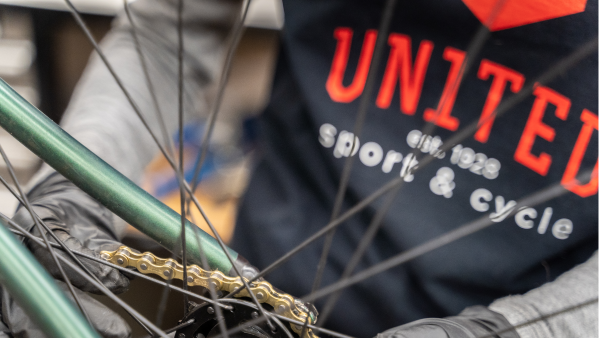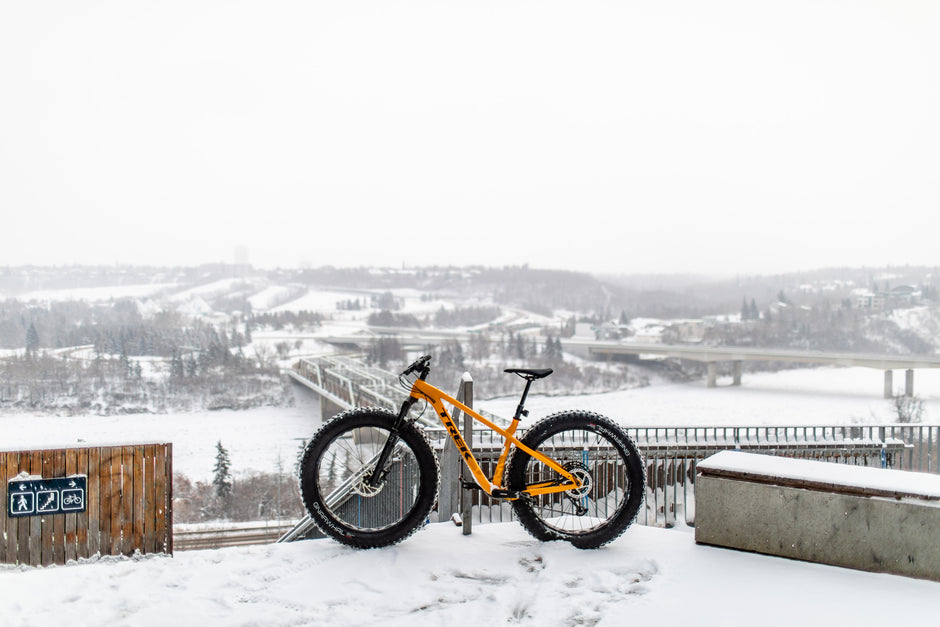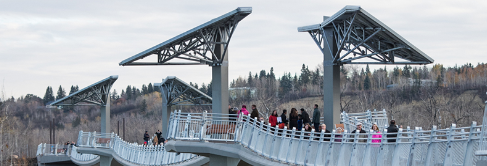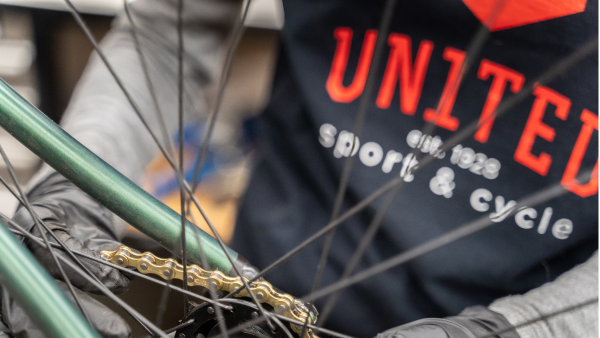Though bikepacking has been around for years, it’s grown in popularity as more and more people are looking for affordable adventures and more ways to enjoy cycling. Whether this is your first extended cycling trip or you’re looking for ways to improve the journey, we’ve assembled our need to know points for bikepacking.
What we cover in this article:
- Where are you riding?: Considerations on planning your bikepacking adventure.
- How to pack: Tips for keeping safe while keeping the load light.
- What to wear: Things to keep in mind for bikepacking in comfort.
- Tips and Tricks: Suggestions from experienced long-distance riders.
Where are you riding?
Where you’re going and how you’re getting there will impact many of the decisions you’re going to make. Take these into consideration when planning out your bikepacking route.
Distance
There’s a general rule that you can go about three times the distance on a bike as you would backpacking on foot. As you get more experienced you’ll better know what you’re comfortable with. If this is your first adventure, plan a shorter route. This will be safer and help you learn the ropes before planning a bigger excursion.
Terrain
Many cases you’re going to be starting on road terrain, but you may have to do trails or gravel. This will impact your bike choice, shoe choice and frequency of stops. So plan your route out, and you can use Google Maps or equivalent to review the road itself and confirm what you’re signing up for.
Sleep and Break Points
Know your limits! If you’re an experienced long-distance rider and have done bikepacking, you will have a better idea of how much distance you can cover between needing breaks and sleeping. Routine stops are highly suggested to stretch out and take a small recovery from riding.
Amenities
Yes, you will be packing some food and water, but having spots along the way to take a break and stock up are invaluable. Plus, you may or may not be comfortable with side of the road bathroom breaks on your bikepacking adventure. Mark your break points along the route and don’t leave it up to chance when you’ll be coming by civilization.
Picking a Bike
Most of us won’t have a choice in the bike we choose, we’re going to be using the one we have. That being said, the route you’re going and the terrain involved should dictate the bike. If this is primarily trail riding and off road bikepacking, use a mountain bike. Mostly road? Use a road bike. Comfort bikes might seem comfortable around town, but they aren’t necessarily great for long distance riding.
How to pack for bikepacking
The key element in our journey is knowing what to pack and how to pack it. There’s a balance of bringing too much in order to feel safe versus packing too little to keep weight down. The keys here are safety and comfort. You want to have confidence in your journey, but if you don’t enjoy bikepacking, you’re defeating the purpose.
Don’t Overpack
Overpacking will add plenty of strain on your pedalling, wear you out and make the trip miserable. Cut down to the essentials and strategically pick which luxuries matter most. Make sure you have a set of bike tools, but you’ll only need one set for the trip. Have two spare tire kits, toiletries, change of clothes, snacks and water.
Share the Load
Going as a group is highly encouraged for bikepacking. We always find these journeys more fun together, but it is also safer and easier. There are some things like bike tools that only one person needs to carry, so you can share around the weight. You can also take turns on some items as well. Make sure everyone gets there safe and enjoys the ride.
Proper Cycling Bags
Your bike should carry most of the load! Avoid heavy backpacks that put unnecessary strain on your body. Panniers are great for carrying lots of gear, but can impact aerodynamics. A trunk bag or a frame bag will be better to reduce drag, but offers less storage space, so consider your distance and what you’re bringing when making a decision. Check out our full assortment of bags and panniers online.
Pro-Tip: A handlebar bag is a game changer for bikepacking. Easy access to snacks will keep you fueled up for those long hauls!
Thoughts on Trailers
A bike trailer offers huge storage options. If you’re doing outdoor camping where you have tents and gear, this will certainly be necessary. We offer caution on this as it will add substantial weight to your ride, and if you’re going long distances, down rough roads or trails, a trailer can become a big burden. So be cautious of just throwing everything in a trailer, you might find yourself packing things you don’t need just because you have it.
What to wear bikepacking
Back to our point on comfort, bikepacking is a big challenge on your body, so wear the right gear to reduce the stress.
Proper Footwear
Deciding on the right footwear comes largely down to terrain and bike choice, but we encourage people to bikepack in a mountain biking shoe or something flat. This is because we’re often on rough terrain where a road-cycling shoe may become a problem. You’re also going to be getting off your bike for breaks and walking around, so think of your comfort. Check out our cycling shoes online, or come try them on at our Edmonton store and get expert help.
Cycling Kit
Based on the time of year and weather, you want to pick the right clothing. There’s an important balance of keeping warm or cool, which is why proper cycling gear that breathes is worth investing in. Weather can also change, so having a wind-proof or water-proof jacket is an important addition. United has a huge assortment of cycling gear, gloves and jackets.
Pro-Tip: Don’t skimp on the sunscreen! You won’t realize your mistake until you’re done for the day, so apply and reapply when you take breaks.
Pro-Tip: Keep your clothes clean. Your kit gets sweaty and dirty, and that causes irritation that will make the ride highly uncomfortable. If there’s a shower at a place you’re staying, thoroughly wash your gear and press it out in a towel to dry.
Tips and tricks for bikepacking
Having gone on a number of extended trips, we can tell you a few other things to keep in mind while bikepacking. These are optional, but can make a big difference in enjoying the journey.
GPS Bike Computers
Beyond just tracking your speed and distance, many GPS cycling computer units have trip planners on them. We highly suggest using these for several reasons:
- Phones can lose signal, where displays can have loaded routes
- Keep your phones battery for emergencies
- Set reminders for breaks
- Safer to mount on your bike
- You are less likely to wreck your phone if you fall
We carry a large selection of display units. These are bikepackers best friend!
Pro-Tip: Set family reminders for loved ones to check in. You should always inform people where you’re going and when you expect to arrive for safety reasons, put reminders in your device to send a text or email at intervals while bikepacking.
Hydration
You might think your one water bottle is enough, but depending on your trip length and how hot it is, you’re going to go through a lot of water. Yes, water means weight, and you can potentially refill at points, but water is the most important consideration to your health. We have other hydration solutions like camel backs or additional bottle holders you should definitely consider.
Locks
This definitely adds some weight to your ride, but if you’re going to be getting off your bike to eat, hike, etc, you want to consider security. It’s easy for someone to make off with your ride when you’re in a new place, and then you’re stranded. We have some lighter lock solutions that still offer great protection.
Thanks everyone for reading through this, we hope you learned some important tips and tricks. Get excited! Bikepacking is a growing trend because it's a fun adventure going solo or with a group. Please, come down and visit us at United if you're looking for advice and help making your trip incredible!







